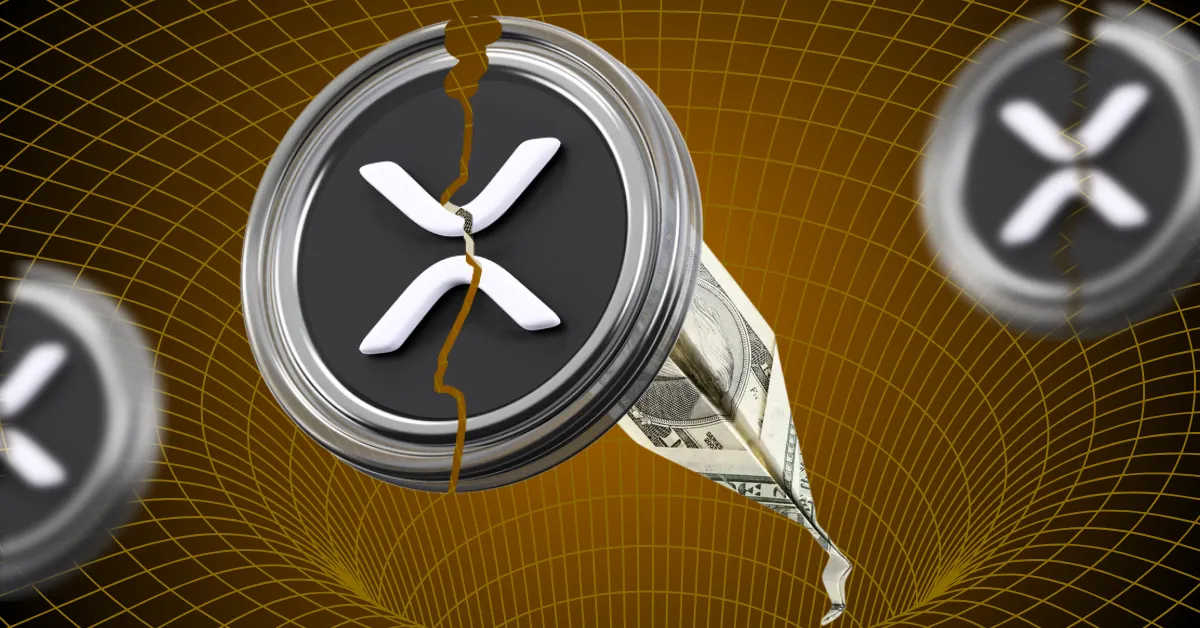
Each month, Ripple unlocks 1 billion XRP from escrow, and this routine action often fuels rumors of a price dump. But is Ripple flooding the market?
According to crypto analyst Vincent Van Code, the truth behind Ripple’s escrow system is far less dramatic—and far more strategic.
Ripple uses a pre-programmed escrow system built into the XRP Ledger. Every month, 1 billion XRP is unlocked, but only a small portion enters the market.
Vincent Van Code explains that more than 80% of the XRP is re-locked into new escrows immediately. The remaining XRP, typically 10% to 20%, is allocated to Ripple’s operational expenses, liquidity needs, and strategic partnerships.
This method prevents sudden supply shocks and ensures long-term sustainability.
The XRP that gets re-locked is placed into new time-locked escrows on the blockchain. These are not held by Ripple directly but governed by the XRP Ledger’s built-in escrow protocol.
This design ensures XRP cannot be accessed or sold prematurely, eliminating concerns over sudden large-scale dumps.
Ripple uses XRP to power its On-Demand Liquidity (ODL) platform, enabling fast and low-cost international transactions.
When financial institutions use ODL, they convert fiat into XRP, transfer it across borders, and then convert it back into local currency—all within seconds.
This use case means the XRP is not held for speculation; it is rapidly bought and sold to complete real transactions. As a result, it has minimal impact on long-term price movements.
Van Code also points out that Ripple’s XRP sales represent less than 1% of daily market volume.
Given the 24-hour volume exceeding $212 billion, the idea that Ripple is crashing the price through these sales doesn’t hold up. Factors like Bitcoin price, regulatory news, and institutional activity play a far greater role in market movements.
He adds that if Ripple had been trying to dump XRP, the market would have reacted much more severely by now.
Despite market volatility, XRP has outperformed both Bitcoin and Ethereum, showing a 335.1% annual gain.
Here’s how XRP has moved in 2025:
While short-term corrections exist, XRP’s long-term growth and expanding real-world use case remain promising.
No, Ripple is not dumping XRP. Ripple does unlock 1 billion XRP each month, but over 80% is re-locked into new escrow contracts. Only 10–20% is used for operations and liquidity, mostly powering On-Demand Liquidity (ODL) transactions—not for market dumping. The XRP Ledger ensures this process is transparent and time-locked. Ripple’s sales make up less than 1% of daily volume, so claims of price manipulation are false.
Over 80% of unlocked XRP is re-locked to prevent sudden supply shocks, ensure long-term sustainability, and maintain price stability by controlling market circulation.
XRP acts as a bridge currency in ODL, enabling fast, low-cost international transactions by converting fiat to XRP, transferring it, and converting it back to local currency within seconds.
No. Ripple’s sales are less than 1% of daily volume. XRP’s performance is more influenced by broader market factors like Bitcoin price, regulatory news, and institutional activity.
CoinPedia has been delivering accurate and timely cryptocurrency and blockchain updates since 2017. All content is created by our expert panel of analysts and journalists, following strict Editorial Guidelines based on E-E-A-T (Experience, Expertise, Authoritativeness, Trustworthiness). Every article is fact-checked against reputable sources to ensure accuracy, transparency, and reliability. Our review policy guarantees unbiased evaluations when recommending exchanges, platforms, or tools. We strive to provide timely updates about everything crypto & blockchain, right from startups to industry majors.
All opinions and insights shared represent the author's own views on current market conditions. Please do your own research before making investment decisions. Neither the writer nor the publication assumes responsibility for your financial choices.
Sponsored content and affiliate links may appear on our site. Advertisements are marked clearly, and our editorial content remains entirely independent from our ad partners.
Macro headwinds have catalyzed selling behaviour in the last few days, making back-to-back weekend dumps…
XRP is yet again commanding attention because the 2025 bull market intensifies. Trading at $2.37,…
XRP is once again making headlines as traders anticipate a strong breakout in the months…
Binance has announced that it banned more than 600 accounts last week for using unauthorized…
Story Highlights The live price of SUI crypto is . The SUI price is expected…
Story Highlights Solana Price Today is . Solana coin price could reach a potential high…